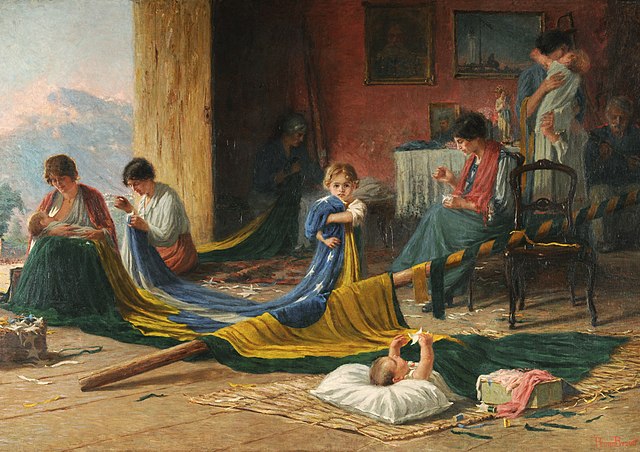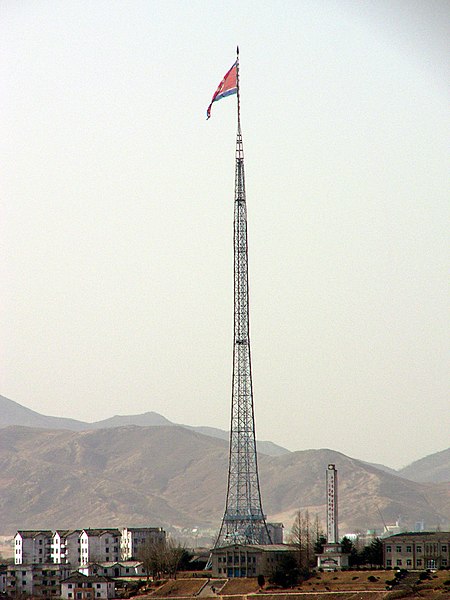The national flag of France is a tricolour featuring three vertical bands coloured blue, white, and red. It is known to English speakers as the Tricolour, although the flag of Ireland and others are also known as such. The design was adopted after the French Revolution, where the revolutionaries were influenced by the horizontally striped red-white-blue flag of the Netherlands. While not the first tricolour, it became one of the most influential flags in history. The tricolour scheme was later adopted by many other nations in Europe and elsewhere, and, according to the Encyclopædia Britannica has historically stood "in symbolic opposition to the autocratic and clericalist royal standards of the past".
The Brandenburg Gate in Berlin was one of many world landmarks illuminated in the French flag colours after the November 2015 Paris attacks.
The white flag of the monarchy transformed into the Tricolore as a result of the July Revolution. Painting by Léon Cogniet (1830)
Lamartine, before the Hôtel de Ville, Paris, rejects the Red Flag, 25 February 1848. By Henri Felix Emmanuel Philippoteaux
The French soldiers started to use white crosses, during the Hundred Years' War, to distinguish themselves from the English soldiers wearing red crosses.
A national flag is a flag that represents and symbolizes a given nation. It is flown by the government of that nation, but can also be flown by its citizens. A national flag is typically designed with specific meanings for its colours and symbols, which may also be used separately from the flag as a symbol of the nation. The design of a national flag is sometimes altered after the occurrence of important historical events. The burning or destruction of a national flag is a greatly symbolic act.
Johnson's new chart of national emblems, published c. 1868. The large flags shown in the corners are the 37-star flag of the United States (flown 1867–1890), upper left; the Royal Standard of the United Kingdom, upper, right; the Russian Imperial Standard, lower left; and the French tricolore with inset Imperial Eagle, lower right. Various other flags flown by ships are shown. The Flag of Cuba is labelled "Cuban (so called)". The Chinese dragon on the
The first Italian flag brought to Florence by Francesco Saverio Altamura (1859)
A 1919 painting depicting the Brazilian flag being embroidered by a family.
The world's sixth tallest flagpole flying a 270 kg (595 lb) Flag of North Korea. It is 160 m (525 ft) in height, over Kijŏng-dong ("Peace village") near Panmunjom, the border of North Korea and South Korea.








